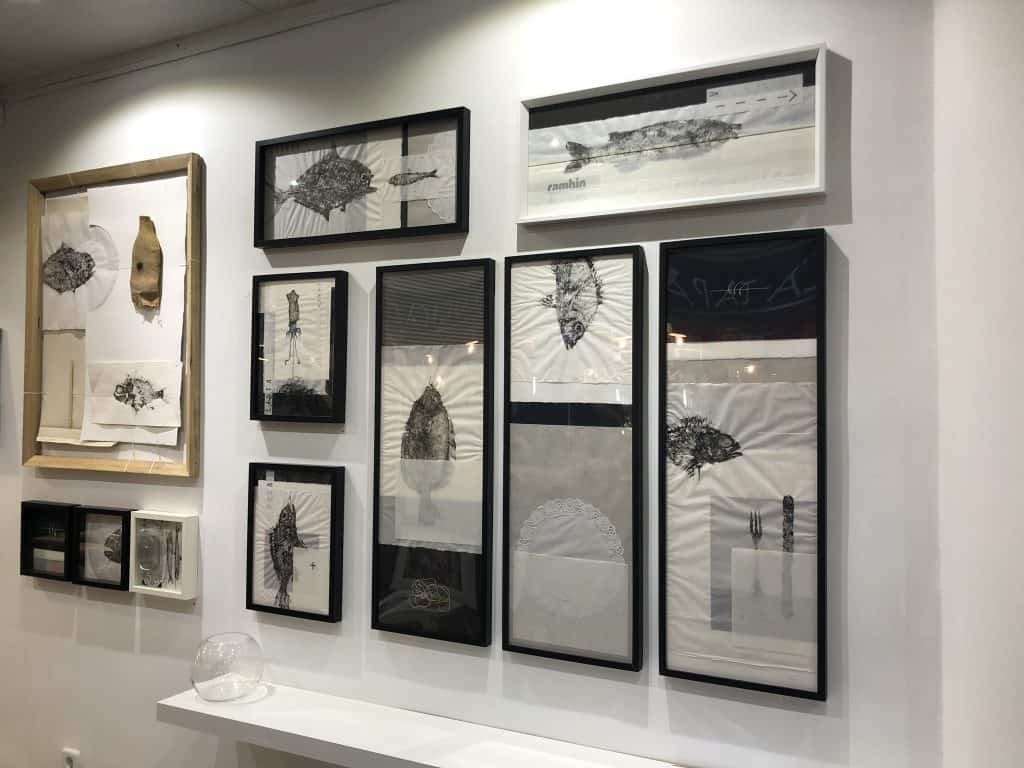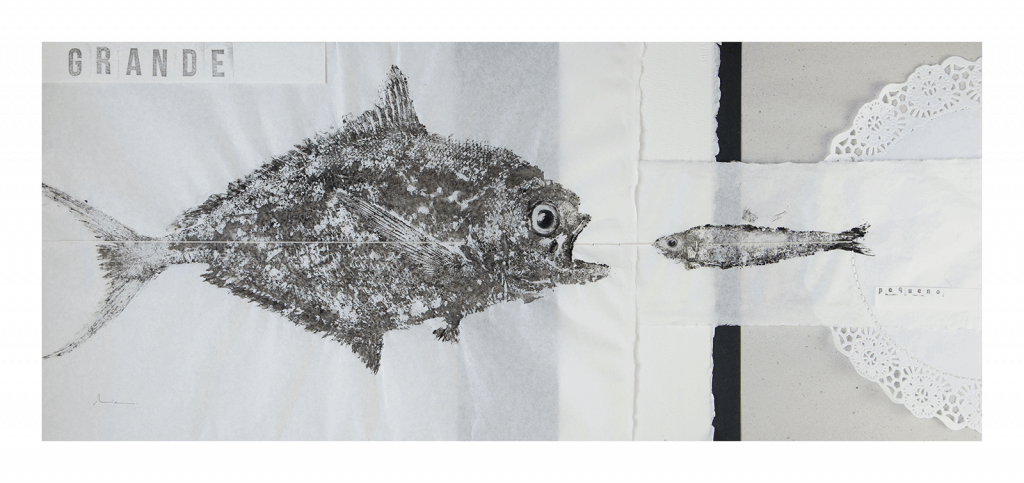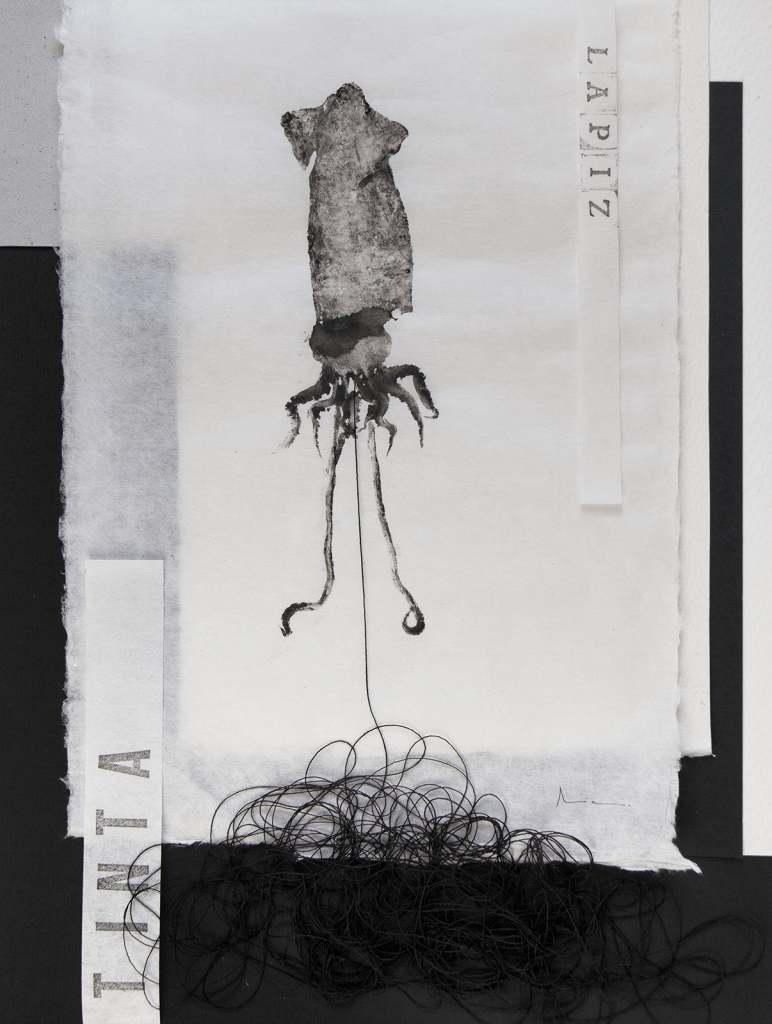An ancient Japanese fisherman’s technique, the vastness of the sea and a great talent to shape ideas.
As if he were a fishmonger or a bartender, the merchant of La Pecera unfolds his apron and ties it to his waist before attending his customers. But don´t expect him to fillet a fish, or serve you a pint. Instead, he will present us the works that are hanging in this particular market stall.

During the first weeks of November, a dozen works of art have been covering a wall of the gallery La Pecera de la Cebada: The fish bowl of la Cebada. Visual artist and designer Noelia Báscones Reina has created these works for the gallery at the Madrilenian market Mercado de La Cebada and has titled the exhibition: GYO/collection.
The leading actors of these simple, but solid works of art are printed fish. These fish transferred on paper in black ink have been made with the real fishes as a template, a Japanese technique called gyotaku. They are rubbed with non toxic ink and pressed against the rice paper, resulting in an accurate reproduction of the very own animal.
The reproductions on paper were indeed the main purpose, used by Japanese fisherman to show their buyers their daily catch at the fish auction.

So, what better location to show this technique nowadays, than a market? Don´t we all like to see the fish, the meat, the vegetables, or any other produce before we buy it? Especially at a market we have a very good opportunity to check their quality and freshness, and let the seller advice us.
Aside from the beauty of these depicted fish, what adds up to the value of this exhibition, in my opinion, is that the artist not only shows us the technique, but is adding different layers to her works, and I´m not only referring to the layers of material, of course.

In a very subtle way she includes pieces of robe as if they were scraps of a fishing-net, or secures a few grates beneath a seam, to bring important issues to debate, such as the alarming pollution of our seas or the enormous amounts of food waste we all generate. She also points a fish in the direction of a plate made by a round laced paper or adds eating sticks or cutlery to reflect aboutour current consumption habits. We can even read the wavy paper as the metallic store shutter, through which the fish in this case, has to be transported in order to be sold, as a little reminder of the journey from the sea to our table.

None of the materials or the words that Noelia has used have been chosen lightly, each one adds depth, resulting in collection of modern still lifes that exude quality and freshness, just like the fish at the auction.
Thanks to this exhibition at La Pecera, the market not only offers food, but it gives us the opportunity to reflect on the provenance of the products, on the way we eat and on the waste that is generated by the product itself and its capture or production.
We leave this market stall hungry, with the urge to visit more. During only a few weeks, we have seen the immense sea in just a little fish bowl.


